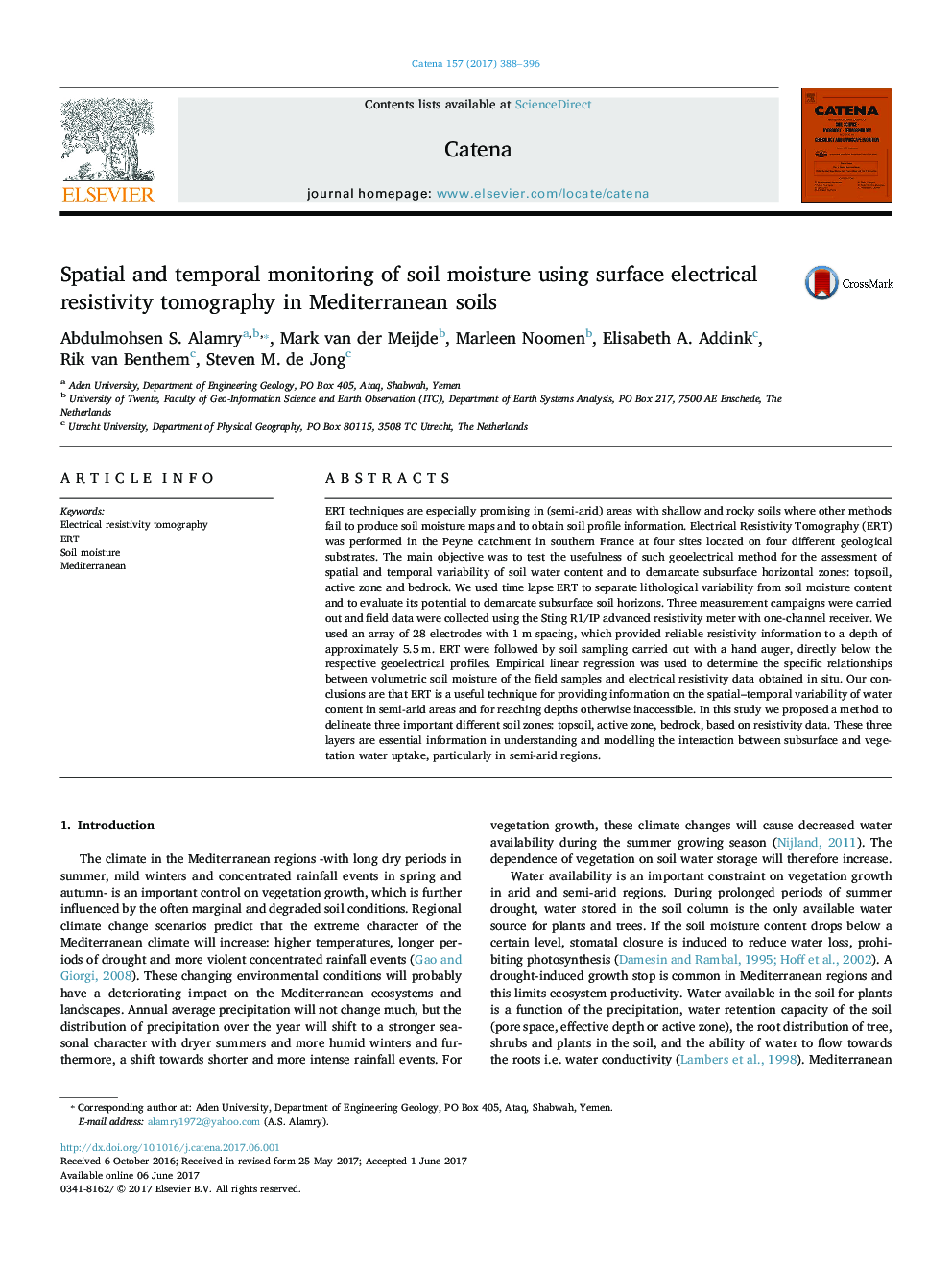| Article ID | Journal | Published Year | Pages | File Type |
|---|---|---|---|---|
| 5769875 | CATENA | 2017 | 9 Pages |
â¢ERT provides info on spatial-temporal variability of water content in semi-arid areas.â¢Using ERT we delineate three different soil zones: topsoil, active zone, and bedrock.â¢Understanding and modelling interaction between subsurface water and vegetationâ¢Lithology controls water availability and storage capacity in Mediterranean.
sERT techniques are especially promising in (semi-arid) areas with shallow and rocky soils where other methods fail to produce soil moisture maps and to obtain soil profile information. Electrical Resistivity Tomography (ERT) was performed in the Peyne catchment in southern France at four sites located on four different geological substrates. The main objective was to test the usefulness of such geoelectrical method for the assessment of spatial and temporal variability of soil water content and to demarcate subsurface horizontal zones: topsoil, active zone and bedrock. We used time lapse ERT to separate lithological variability from soil moisture content and to evaluate its potential to demarcate subsurface soil horizons. Three measurement campaigns were carried out and field data were collected using the Sting R1/IP advanced resistivity meter with one-channel receiver. We used an array of 28 electrodes with 1Â m spacing, which provided reliable resistivity information to a depth of approximately 5.5Â m. ERT were followed by soil sampling carried out with a hand auger, directly below the respective geoelectrical profiles. Empirical linear regression was used to determine the specific relationships between volumetric soil moisture of the field samples and electrical resistivity data obtained in situ. Our conclusions are that ERT is a useful technique for providing information on the spatial-temporal variability of water content in semi-arid areas and for reaching depths otherwise inaccessible. In this study we proposed a method to delineate three important different soil zones: topsoil, active zone, bedrock, based on resistivity data. These three layers are essential information in understanding and modelling the interaction between subsurface and vegetation water uptake, particularly in semi-arid regions.
